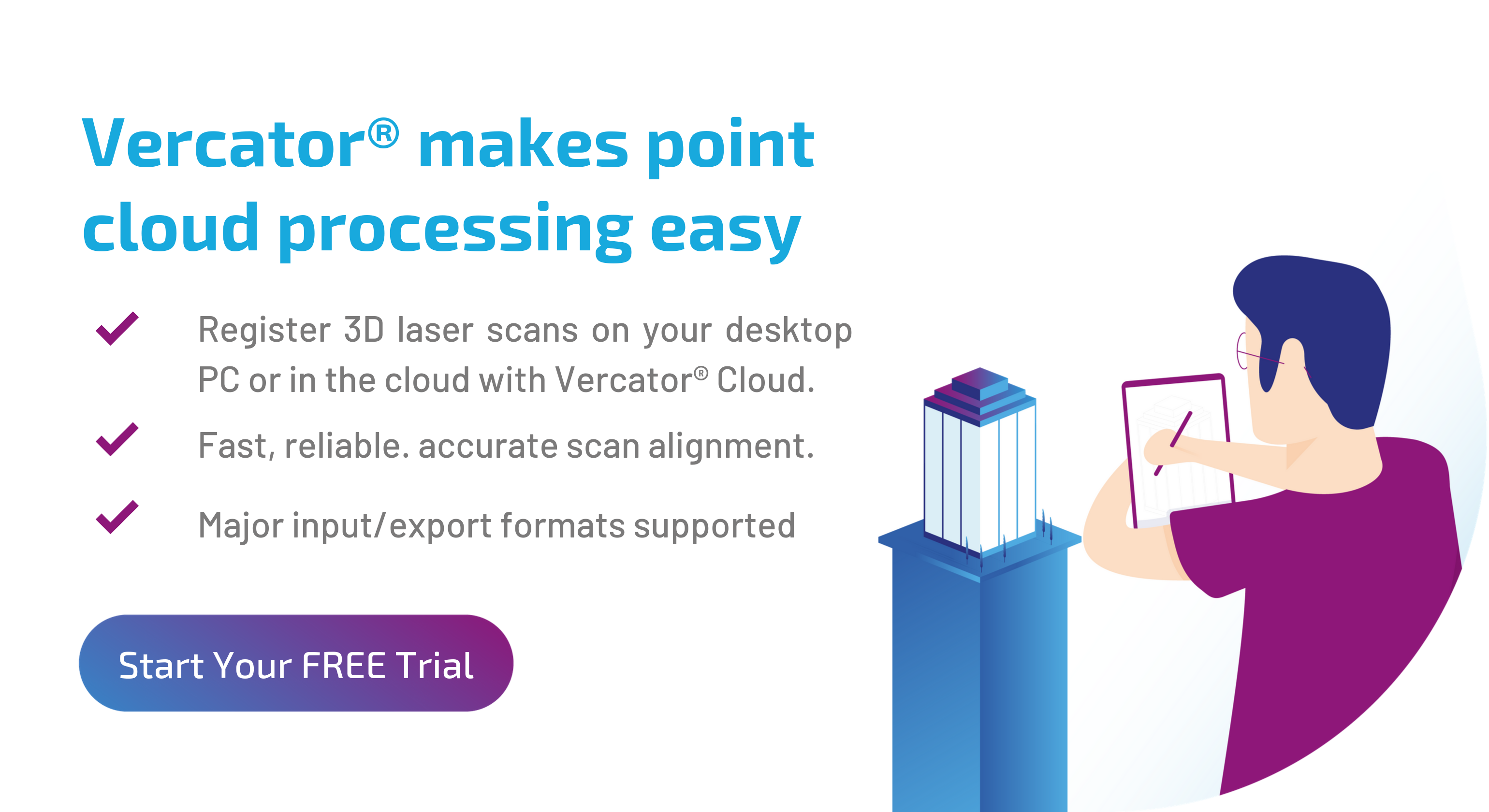Why 2019 is the year to hire a land surveyor for your construction team

Surveyors shape the way we live. Some land surveyors are beginning to be involved within multidisciplinary architectural and engineering teams, and the need for this geospatial expertise in projects will only increase. Methods of obtaining the relevant data are also changing, as satellite-based systems become more accurate and affordable and conventional surveying goes through a digital transformation with the use of LiDAR, point clouds and 3D modelling.
Surveyors are now becoming involved throughout the lifecycle of buildings and construction projects: from buying the land, to planning and monitoring the construction, and managing the finished building — down to final demolition decades later. Central to this whole lifecycle approach is the implementation of Building Information Modelling (BIM).
BIM improves the utility of 3D models, making the investment in surveys even more useful and increases the need for surveys throughout a project. Combined with advances in how surveys are undertaken, surveyors have become a critical aspect in this entire information landscape. By exploiting the surveyor’s skills, BIM is the catalyst to improve quality assurance for construction and design.
Collaboration improves quality (surveyors enable collaboration)
BIM gives an end-to-end view of any project. Using it as a single-source-of-truth, sharing files becomes unnecessary with members of the team all having access to the same data. All specialists are presented with information relevant to them and are able to work with their familiar toolsets and diagrams. The advantage is that any changes made are automatically propagated across the entire dataset and everyone is always on the same page.
When constructing many different layers of a building, the chance of creating clashes is drastically reduced with BIM. Every layer, from electrical systems to piping, is added to the same files so that access to every element is available to the whole team.
By making use of clash detection software, each member of the team can work more closely with every other member and specialists benefit from more direct input at every stage of development. Experimental designs can be modelled and pursued with improved quality producing a much more fluid, collective and interactive design and delivery process with surveyors providing on-site validation of designs and progress throughout the project.
BIM delivers quality assurance to any design and construction project. Using BIM to centralise data in a Common Data Environment (CDE) and allow for data management across one digital dataset makes quality assurance across design and construction more robust. Geospatial management is a particularly important topic as software systems can have complex descriptions of space that are not well understood. Getting this wrong can result in major issues later that are costly to fix, to the extreme of having to rebuild a structure again, hence geospatial knowledge in a project being crucial.
Although BIM-enabled collaboration can be undertaken without adding survey capabilities to your team, surveyors add two significant benefits to any BIM project — quality assurance and model creation.
Scan-to-BIM
Scan-to-BIM is the process of using laser scan data to inform a BIM model. Commonly, this is done at the start of a project — allowing CAD plans to be built on top of exact modelling of existing terrain and adjacent structures. This is incredibly valuable in renovations or projects undertaken with sensitive surroundings.
Scan-to-BIM techniques can also be used to cross-check construction with planning — scanning areas before progressing to the next stage. This removes the risk of building faults into a project and allows teams to push the boundaries of what is architecturally possible. This same technique also makes using prefabricated materials easier and safer.
To take full advantage of what BIM has to offer, teams will have to rely on surveyors. They will need to update, and sometimes radically change their processes to be sure they are extracting the maximum value from the latest technology. By sourcing the right surveyors, project managers, designers and construction teams, you will be able to deploy the best BIM solutions in a wide range of circumstances.
The future of BIM is about generating, modelling and sharing information about physical spaces: 3D imaging and point cloud surveys are the way to do it. New forms of point cloud processing are increasing the accessibility of 3D point cloud surveys to ensure the ‘instant access’ of information which is fundamental to successful BIM implementations.
Cost reduction changes the game
Laser scan surveys have been commercially available for nearly three decades. However, they were not necessarily cheap. Fortunately, this is starting to change. Advances in point cloud processing have made the survey process faster and more affordable, making it easier to collect much more data with greater frequency.
For example, advances in point cloud processing and registration have dropped costs and made point cloud models more accessible. The newest generation of multistage, vector-based point cloud processing software is delivering registration speeds and automation that is accelerating the time it takes to deliver a survey by up to 80%, while reducing the number of manual steps. This is why it is now practical for land surveyors to create BIM models and then scan projects at different stages to ensure quality.
Multi-stage, vector-based point cloud processing software delivers both speed and accuracy without the need to compromise on either. New techniques and processes will continue to reduce the amount of time needed to align scans and produce results for the team, enabling new applications and new ways of working.
Technology is changing fast
While advances in LiDAR, point cloud processing and registration combined with BIM are driving value and quality in projects today — there are more developments on the horizon. Technology is transforming the world and surveyors are at the forefront of many of the latest innovations — from drones to augmented reality, artificial intelligence and even 3D-printed building. To make sense and make the most of these technologies, land surveyors will be your experts and trusted advisers. Here are some examples:
The Internet of Things — how smart objects, sensors and big data can be used to plan and manage projects with less pollution, better use of space and more connected communities.
AI and VR — how artificial intelligence will help create augmented reality; how 3D models will allow people to tour buildings or inspect construction sites virtually
Mobile mapping — how the use of specialist drones, ground penetrating radar and laser scanners will enable surveyors to map and analyse anywhere at any time.
A pivotal role for the future
The role of the surveyor is changing. They are now a vital link in the end-to end optimised success of many projects. They are now involved throughout the lifecycle of buildings and construction projects: from buying the land, to planning and monitoring the construction, and managing the finished building.
More-and more, surveyors are working closely with a wide range of people: architects and engineers, bankers and ecologists, town planners and property developers. They will be your expert on latest technologies: from cloud services to advanced vector-based processing and BIM; to flying drones; to creating virtual reality models.
With skills ranging from 3D-modelling, data analytics and even drone flying to interpersonal skills like communication, teamwork and project management, a land surveyor will be your go-to source of highly valuable, future-proofed geospatial skills and you need to ensure they are a key part of your construction team today.
Tags: surveyors


